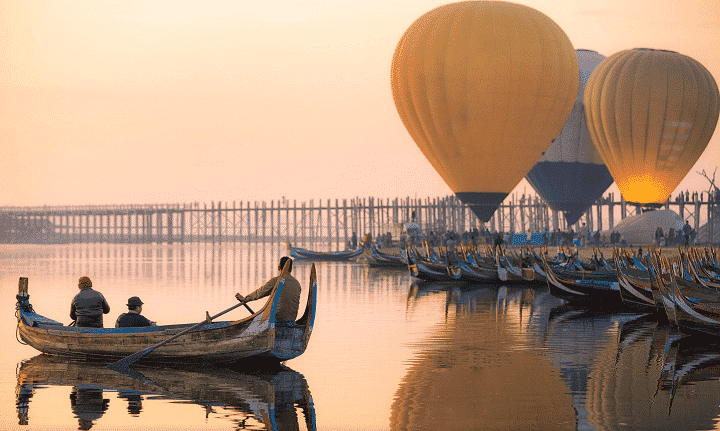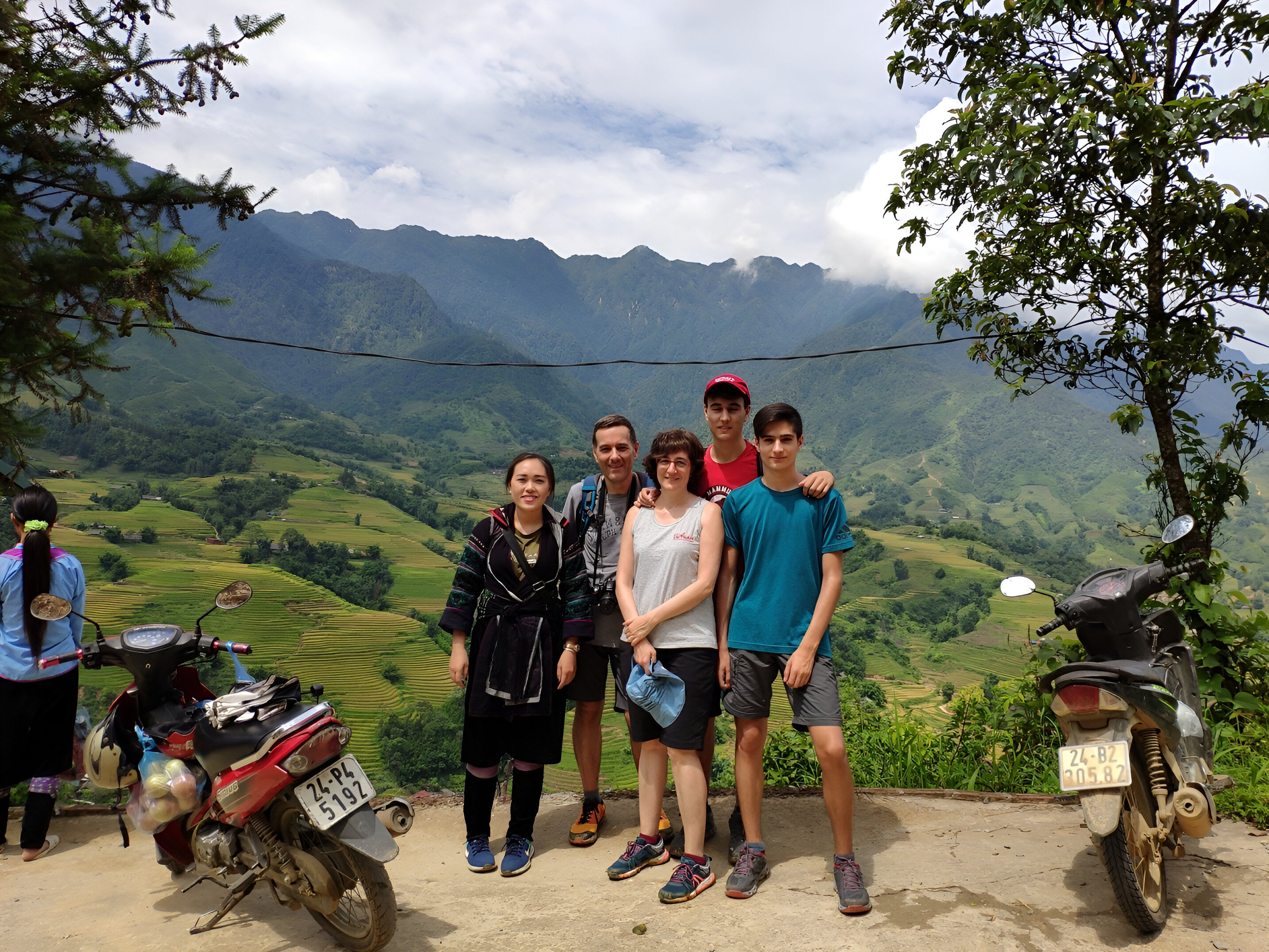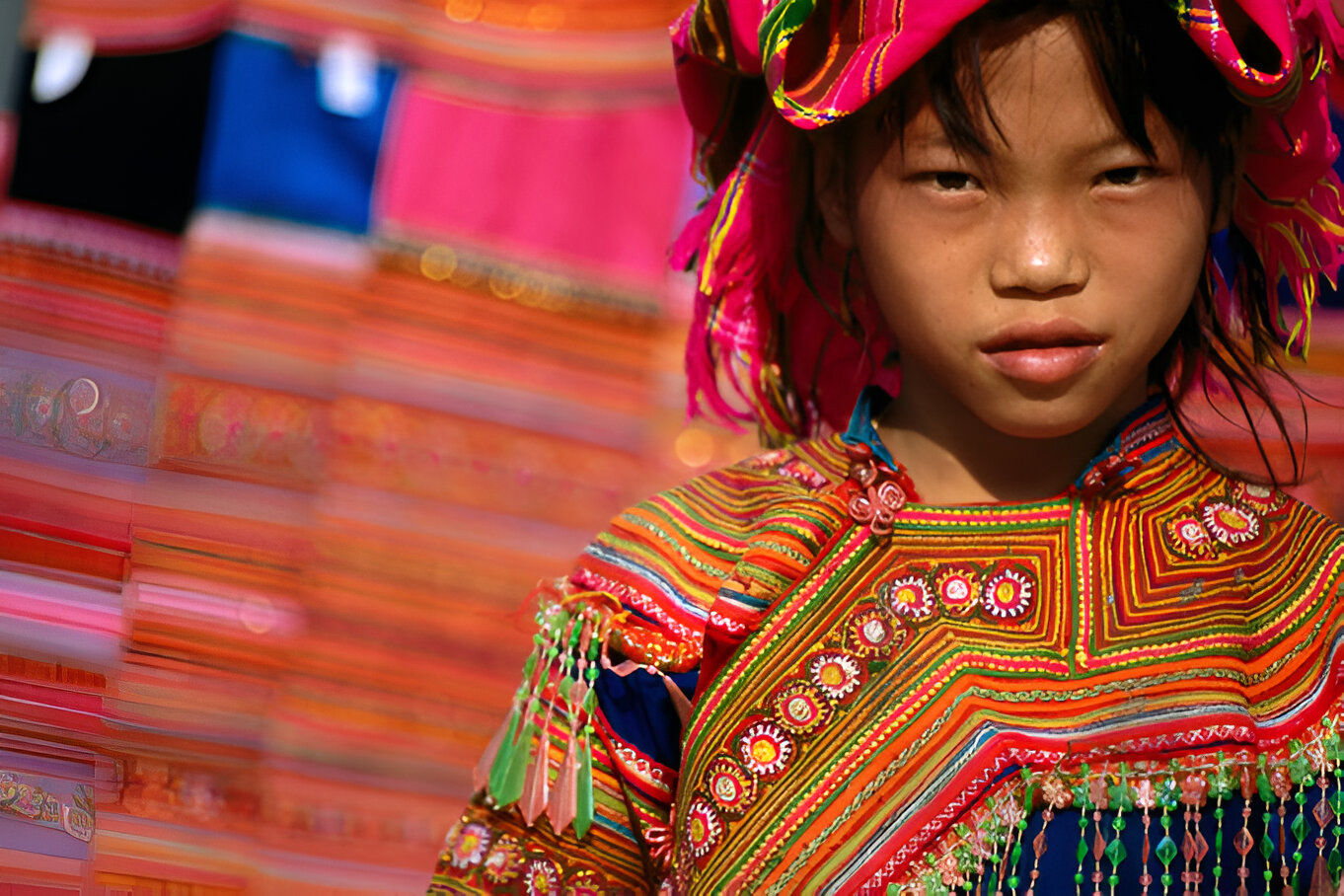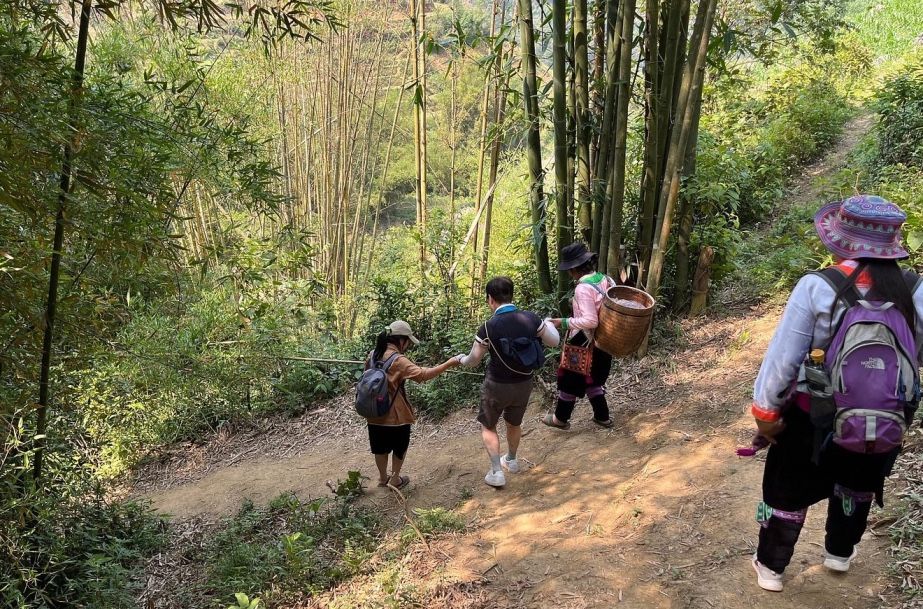SAPA VIETNAM: TRAVEL GUIDE & THINGS TO DO
Sapa Vietnam: A favourite destination for those who have ventured there, the old French hill station of Sapa is set amongst the picturesque Hoang Lien Son mountain range which is the highest in Vietnam. Inhabited by the Black Hmong ethnic minority and surrounded by many other colorful hill-tribe minorities, Sapa is a perfect place to go to appreciate the lifestyle of these friendly people, especially at the colorful markets.
Best things to expect in Sapa, explore the town overlooks a plunging valley of cascading rice terraces, trekking routes, colorful markets and with mountains towering above on all sides. In addition, views of Sapa offers an epic scenery that are often subdued by thick mist rolling across the peaks, but even if it’s cloudy, the little town is still a fascinating place to be, especially when local hill-tribe people fill the town with colour.
Few best reasons to visit Sapa Vietnam
Explore the breathtaking vistas, trek through rice terraces & ethnic villages
Get on top of Indochina, the Mt. Fansipan (Trekking or Cable car)
Spin around the jaw dropping valleys on a motorbike – O Quy pass or Tram Ton
Shop handicrafts on daily, weekends & night markets held by local Hmong
Choose to homestay in the middle of lush valleys, live with locals.
→ Spend few days hiking in Sapa’s terraced valleys, experience the Northern Vietnam’s must see places on a Best Sapa Tours including an overnight train.
Sapa Useful Travel Information
How Many Days To Stay?
Recommended days to stay in Sapa would be around three to Four days including time for some trekking, ride around the rice terraces on a motorbike, and visit local minority tribes and Hmong markets. Sapa’s variety of things to do offers unlimited activities depending on time of the visit and the things expected by you.
Currently exchange & ATM’s
Currency exchange goes through banks (remember to carry your passport), the easiest are USD and Euros. Your hotels and or small travel agents around the town would also accept to exchange your money into VND. There are around 5 ATM’s in the center of Sapa for withdrawing money in VND, the exchange rate on official rate and the withdraw rate is around 30-50K VND (1.5 to 2 USD). Check out Vietnam currency
Best Time to Visit Sapa Vietnam
The best time to visit Sapa would be the period from mid-March to June and also, September to mid-December that rewards visitors with pleasant weather, though a bit of lingering rain appears at the start, and temperatures dip by December.
Sapa weather experience the dry season from January to June. January and February rank as the coldest (and foggiest) months. From March to May, the weather often shines, and summer stays warm despite the rains from June to August, this is also a great time to visit Sapa and northern mountains.
From December to February, Sapa experiences very cold weather, especially at night. However, you get the chance to watch the sunrise over the valley in the morning. If you’re visiting during the winter months, remember to pack your woolies as temperature drops to below zero.
10 best things to do in Sapa Vietnam [2025 update]
In a beautiful valley close to the Chinese border – Sapa’s development was like nowhere else in Vietnam, with the advent of tourism, Sapa has experienced a renaissance. Bad roads have been upgraded to the good standard, countless new hotels & homestay have popped up and the food, including international menus, has improved immeasurably. Here are top things to do when in Sapa
Trekking & Hiking
The best way to see & experience the region like a local is through trekking in Sapa. This adventure takes you through the lush mountains, across the Mường Hoa valley, through bamboo forests, and into local Hmong minority villages. Whether long or short, a trek stands out as one of the top things to do in Sapa, and you shouldn’t skip it while visiting Sapa, Vietnam.
We recommend a minority guide, or plan a head and book a full tour from Hanoi, Cat Cat is the nearest village 3km from Sapa, to start the hike.
Another popular trekking is to Ta Phin village , home to Red Dzao and about 10km from center of hike within the 14km loop through the area, passing by Black H’mong and Red Dzao villages.
For spectacular trekking with valley views, there’s a beautiful hike along a high ridge east of Sapa through the Black H’mong settlements of Sa Seng and Hang Da down to the Ta Van River.
Explore terraced rice fields
Probably the main reason why so many tourist Visiting Sapa and around the terraced green hills by the Muong Hoa mountains. Set aside time to visit the rice terraces in Sapa Vietnam as one of the best things to do in the north. This is the Vietnam of your imagination: emerald green rows of terraced fields stretch as far as the eye can see, dotted with wooden houses and dusted with clouds.
Best rice fields in Sapa, and generally in Lao Cai province are in villages of Ta Phin, Y Ty, Ban Ho and Ta Van. check out Vietnam Famous Rice Fields
During summer and fall abundant rains can sometimes cloud views of the slopes. mid-September might be a more reliable period to see the golden rice fields, in this time, the landscape is golden and activity levels are high. June is when the fields are green & lush, so the landscape is golden and activity levels are high.
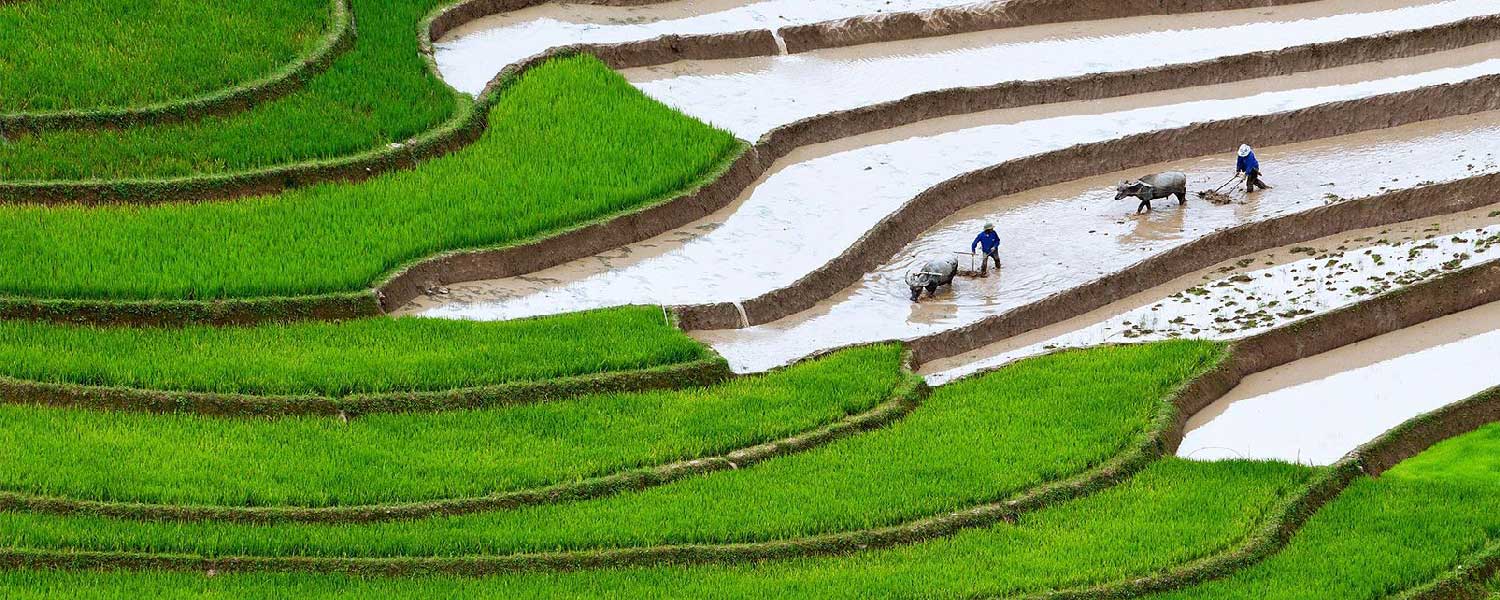
Visit hill tribes & minority villages
The mountain villages, hill tribes and ethnic minorities are another great reason to visit Sapa and the region would be of considerably less interest without the H’mong and Dzao tribal people, the largest ethnic groups in Sapa. The billowing red headdresses of the Red Dzao are visible all over town, a surreal sight amid the accelerating development.
The H’mong are more numerous and canny traders. Their villages may look medieval, but traditionally, they are all farmers and grow rice and keep buffaloes for trading. Most of the Montagnards have had little formal education and are illiterate, yet all the youngsters have a good command of English, French and a handful of other languages that enable them to become a de-facto guide leading tourists through the minority villages.
If possible, try to visit during the week, when Sapa is less crowded and more intimate. Crowds flock to Sapa for the Saturday market, but a smaller market is held every day. There is plenty to see on weekdays, and there are lots of interesting villages within walking distance of the centre.
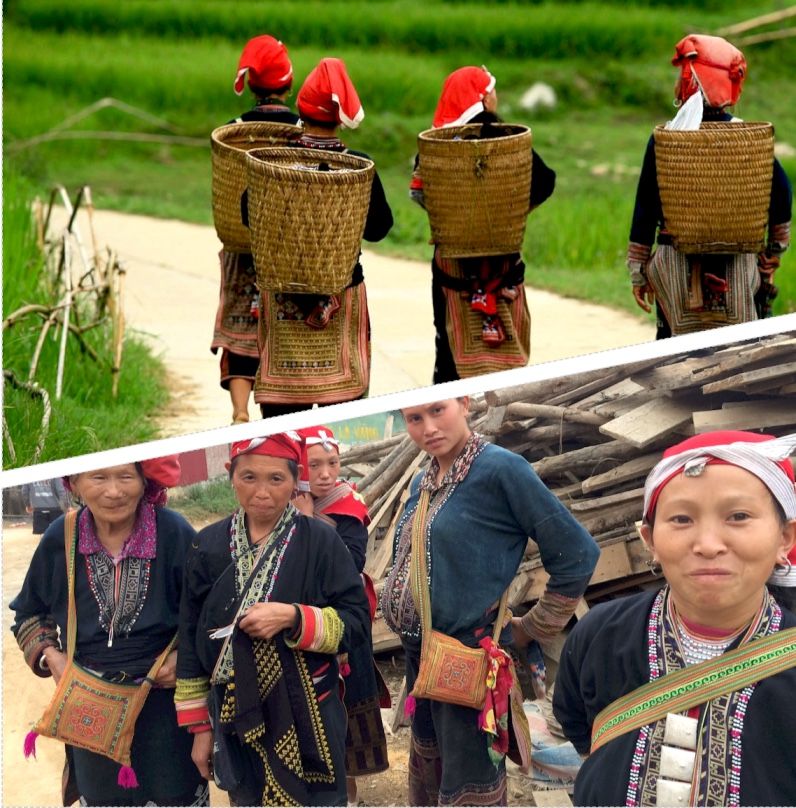
Homestay with local Hmong
Stay in a homestay to tik-up one of the best things to do while in Sapa. Homestays are just around anywhere in the town and most of them are run and manage by local minority people, however, I do recommend to choose to stay around the Sapa town in villages to get closer to the nature, hill tribe villages and next to the rice fields. The experience would be unique but very worthy.
Many homestay are cozy and small and they’re fully booked specially at the weekend, upon check in (which is mostly very flexible in time), the host family may ask you if you would prefer to eat dinner and lunch with them and if you do confirm, you will be eating a local made fresh foods. Th food might be simple, however, most homestay families learn to cook foods that cater to the taste of western travelers.
In addition, the off-the-beaten non-touristy things to do in Sapa mostly offers if you choose a homestay, trekking through the jungles, visit local houses and more.
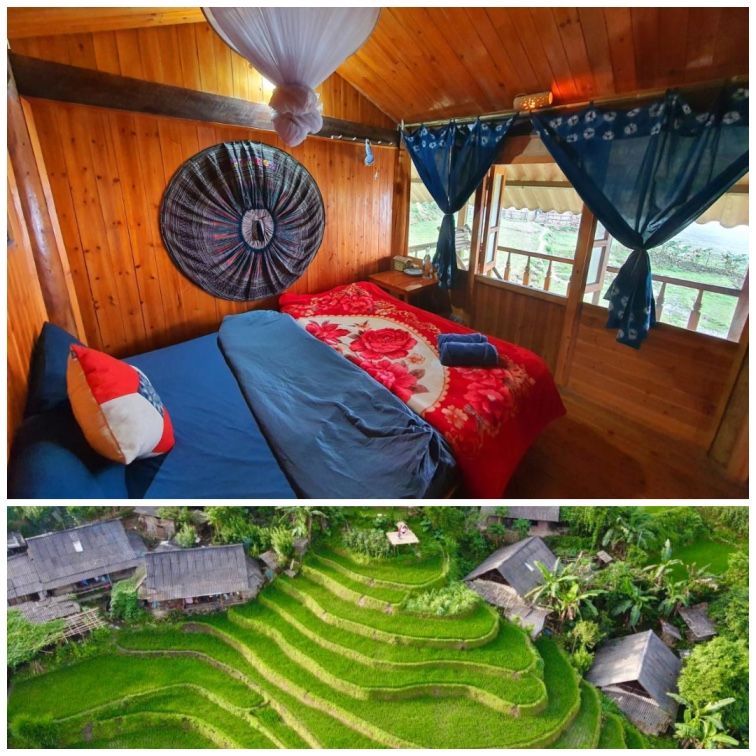
Visit Unique Hill Tribe Markets
Sapa’s colorful markets are on top list of best things to do when visiting Sapa. The mountain markets are about a lifestyle where hill-tribe minorities from surrounding villages go to the market most days to sell handicrafts and ethnic-style clothing. Saturday is the busiest day to visit markets in Sapa.
Bac Ha market is long touted as the weekend approaching, visitors flood in to meet the flower H’mong at the famous morning market. The market is a good base to explore the surrounding highlands as well. The colourful Flower H’mong are the most visible, but other groups include Dzao, Giay (Nhang), Han (Hoa), Xa Fang, La chi, Nung, Phula, Thai and Thulao are also present to the market to sell their local goods.
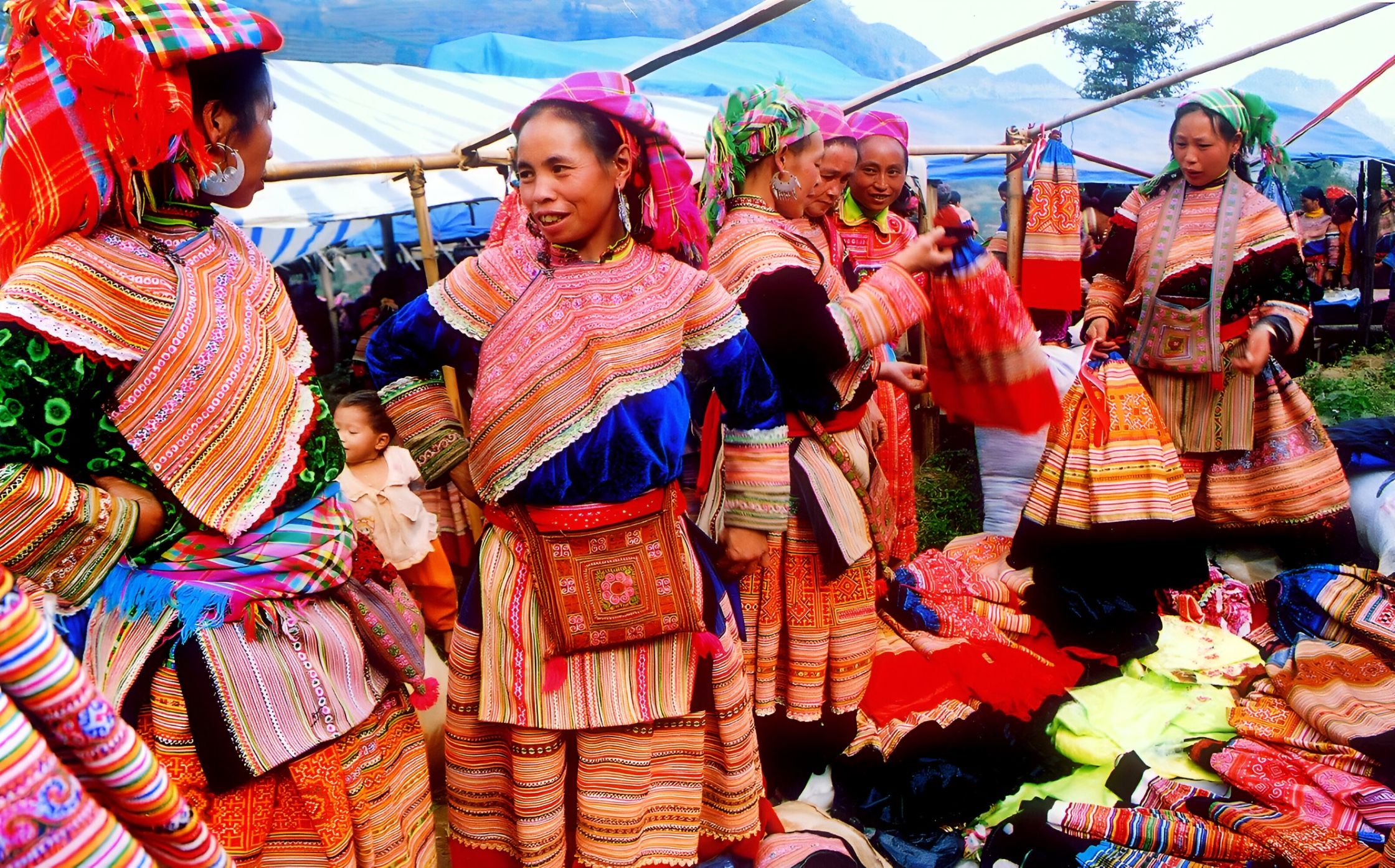
Private tours are the perfect choice to travel independently, groups of friends, or travellers with specific requirements. Plan your trip with our Best deal Vietnam Tours & Trips
Fansipan Mountain Peak by Cable Car
This the highest mountain in Vietnam, Fansipan serves as a major tourist highlight and a top things to do for anyone Visiting Sapa Vietnam. In the past, organizing a 2-3 treks with equipment was the only possible way to reach the peak. While this option remains available , today you can take a 6.5 KM cable car ride from the station in Sapa town crossing the Muong Hoa Valley to the summit of Fansipan in just 20 minutes.
Once you reach the peak, the view over the whole region including Sapa and surrounding mountain passes is beyond imagination. With few pagodas and temples, you may have more things to do once at the Fansipan summit.
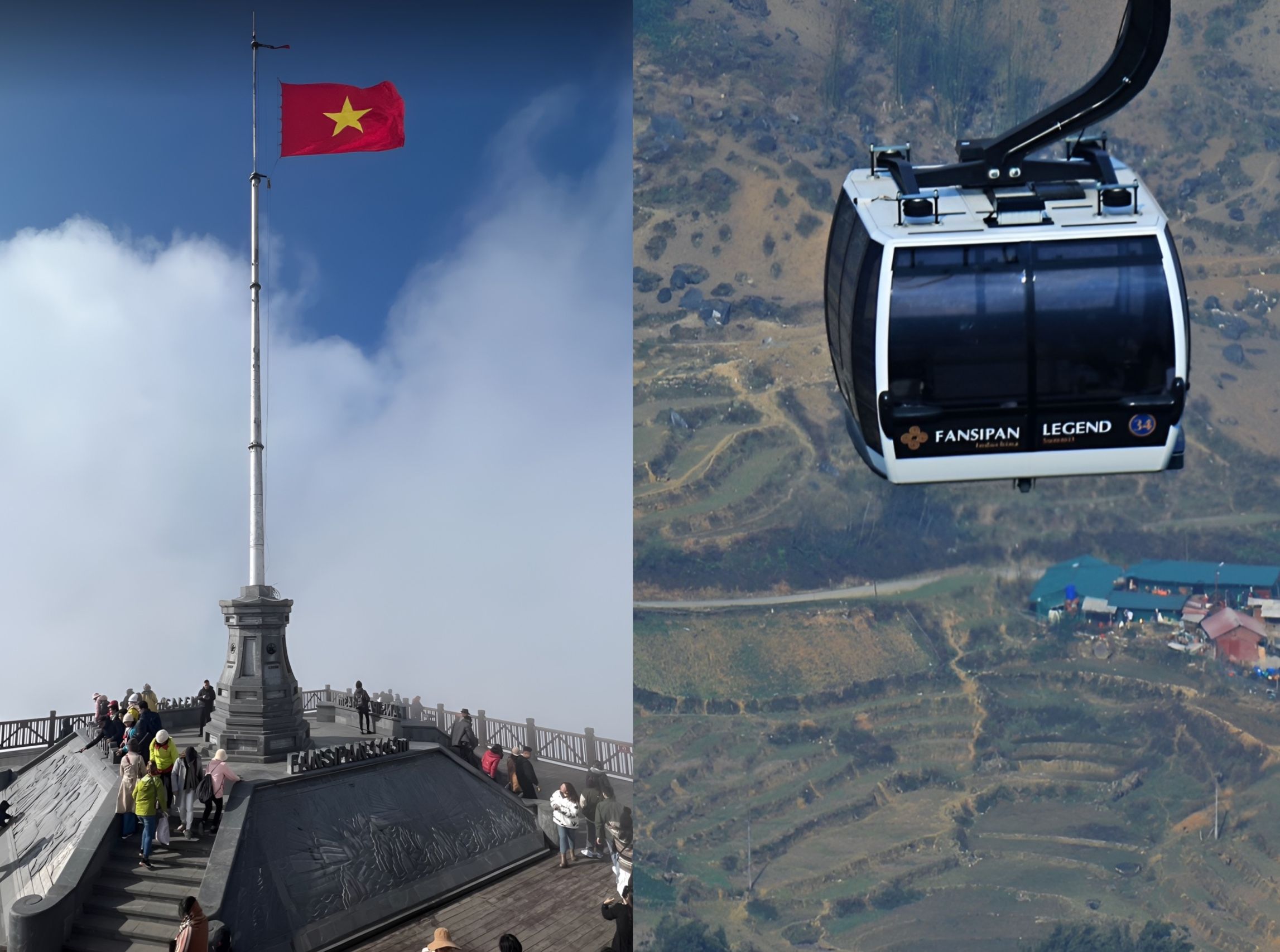
Trekking Mt. Fansipan Independently
Trekking Fansipan, the highest in Vietnam & Indochina – still in demand as it is accessible year round to sensibly equipped travelers in good shape, but don’t underestimate the challenge. It is very wet, and can be extremely slippery and generally bone feeling cold. Don’t attempt the hike and trek upward if the weather in Sapa is poor and cold, as limited visibility on Fansipan can be treacherous.
What is the difficulty level of Fansipan?
Fansipan’s difficulty and the actual trek ranks up to top level and it requires a moderate fitness level and preparation and a bit of hiking experience. The 21km hike to the summit can be reached only on foot, the terrain is rough and adverse weather is frequent. The round trip usually takes three days, however, some experienced hikers do it in two days, and you’ll need to be fit. After walking through hill-tribe villages on the first morning, it’s just forest, mountain vistas and occasional wildlife, including monkeys, mountain goats and birds.

Ride along O Quy Ho Pass (Đèo Ô Quý Hồ)
O Quy Ho Pass stretches along the Hoang Lien Son mountain, it is the longest pass in the Northwestern region on the 4D national highway from Lao Chai to Sapa, the beautiful mountain pass ranks as one of the four most beautiful yet most hazardous mountain passes in Vietnam at an altitude of 2,035 meters. Locally known as the Gate of Heaven as it is covered with clouds. Many motorbike riders choose to cross O Quy Ho pass to experience the magical overview. Check out Vietnam motorbike Tours
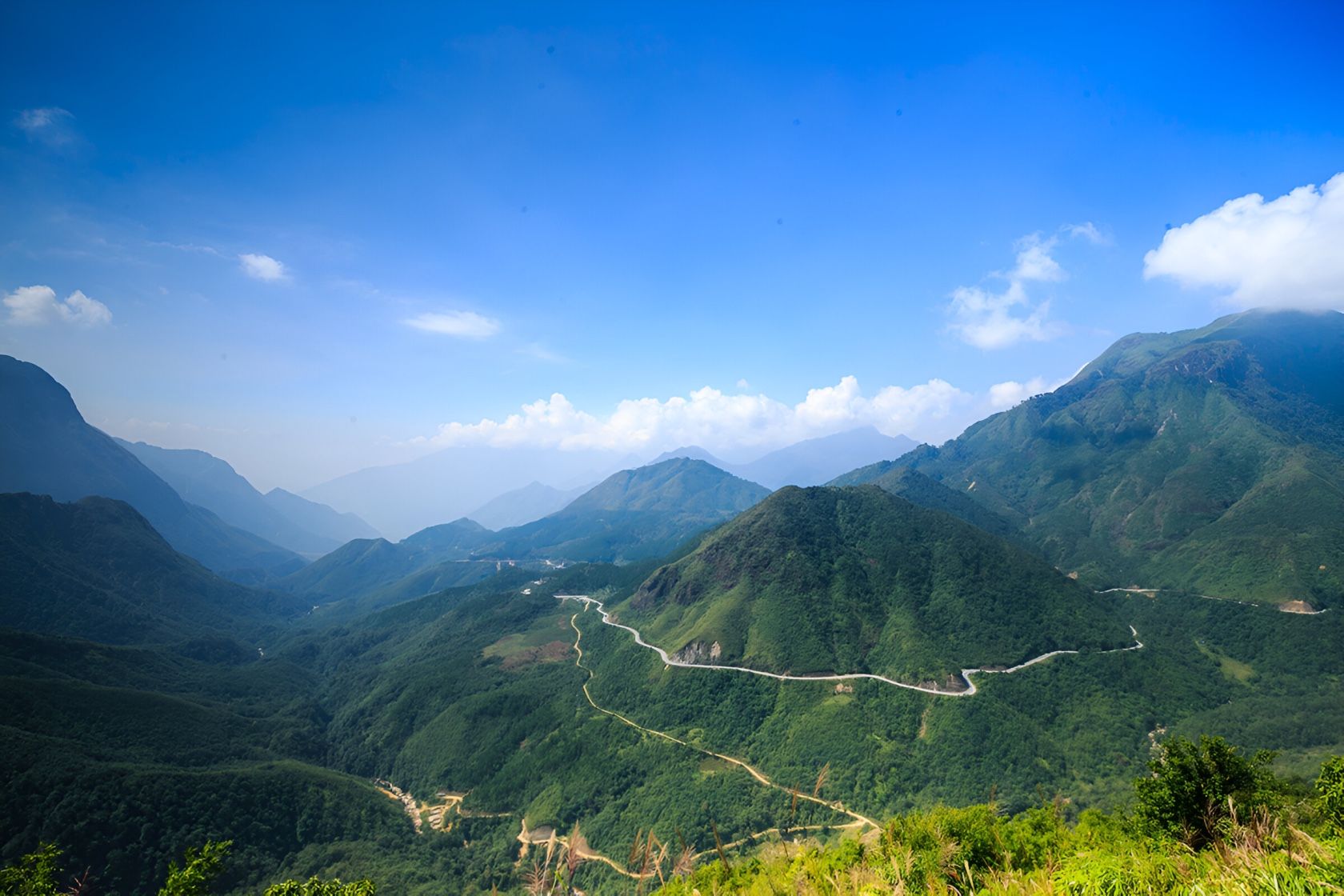
Silver Waterfall & Love Waterfall
A scenic motorbike ride toward Tram Ton Pass, from Sapa city center to the Glass Bridge outside the town reveals more attractions beyond the stunning scenery of Ô Quy Hồ Pass. Along the way, discover two famous waterfalls in Sapa: Silver Waterfall and Love Waterfall. You can catch a glimpse of Silver Waterfall from the road, but a small fee of 20,000 VND lets you get up close for a better view.
Another attractive yet less touristy waterfall is the Love Waterfall which is also near the Sapa city center. To get there, you’ll need a 45 minutes hike up through the lush forest.
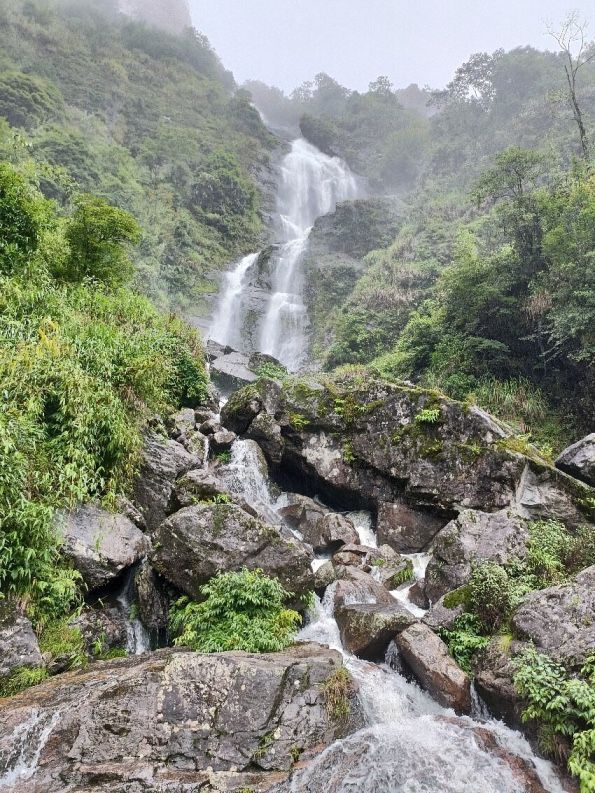
Wander around the center of Sapa
Even if the nicest things to do in Sapa are required to drive outside the town or go for trekking, you are still free to explore the center of Sapa for few good things to see. Sapa’s attraction including the local market and the historic Sapa Stone Church. that has long been considered as a symbol of Sapa tourism area. The whole church was built by stone (walls, floors, bell towers, etc.) that are linked by a mixture of sand, lime and molasses.
Weekdays are a good time to visit the markets, in addition, you can also visit a museum that features exhibits on various ethnic communities in the region. Lastly, you can take a stroll around the lake or visit Ham Rong Mountain to see the cityscape. The center of Sapa is home to a variety of tourist shops, pubs, restaurants, and street food vendors.
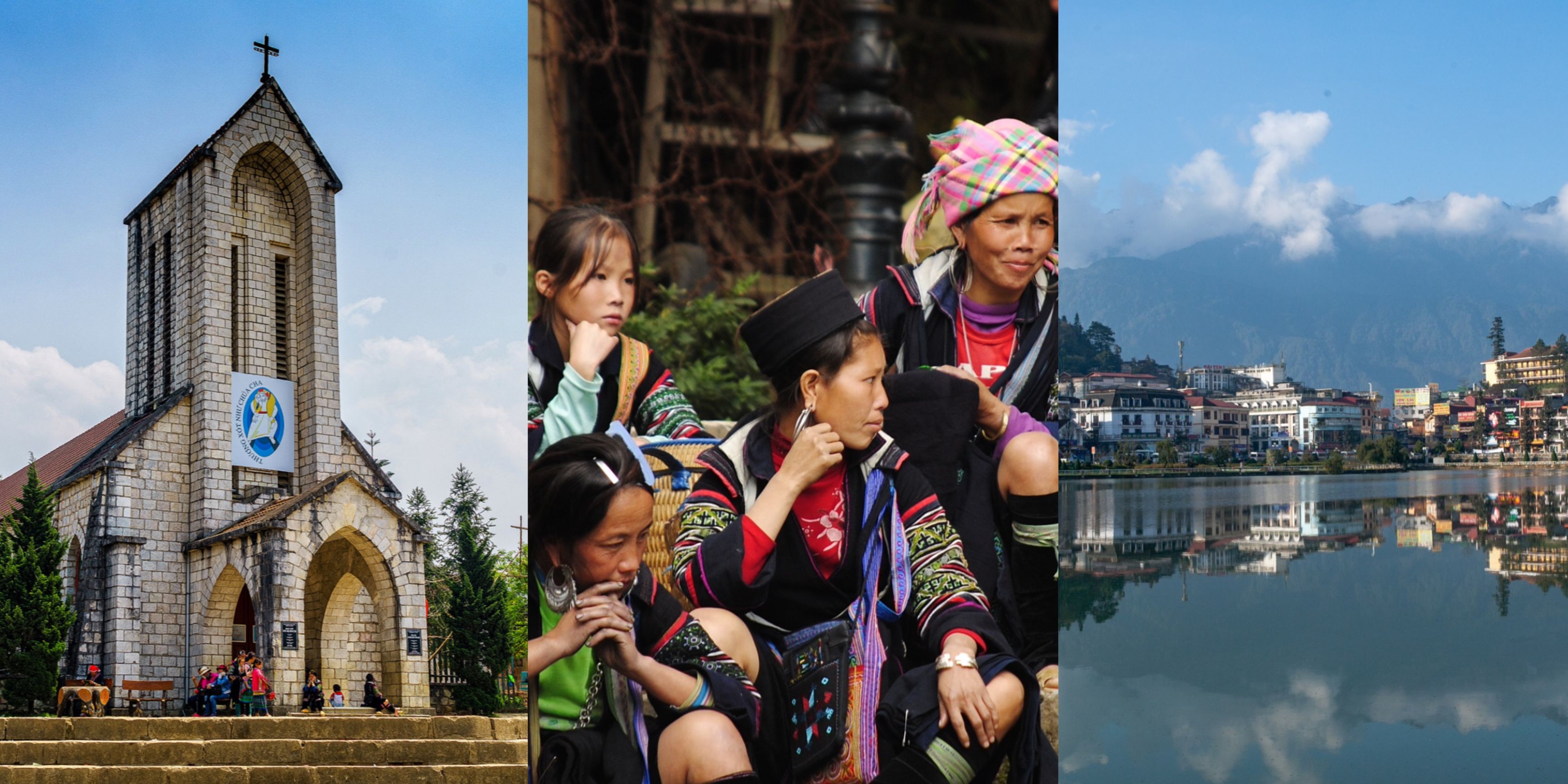
Sapa by motorbike
For any reason, if hiking or trekking in Sapa’s majestic landscape isn’t your thing, but if you’re looking for an alternative to visit them altogether, you’ll still have a great choice and that would be “Sapa by motorbike”.
Sapa Vietnam offers great landscapes and motorbike tours are the best ways to explore them. Sapa attracts many Vietnamese & foreign motorbike riders all year round.
Rent a motorbike is the best way to do some looping and visit mountain passes, rice fields and local hamlets. once in Sapa, rent a motorbike & spend a couple of days exploring the Sapa with motorbike on the Sapa-Sin Ho Scenic Loop; you’ll enjoy some of the grandest alpine scenery in Southeast Asia and if you have more time, combine it with a famous Ha Giang Loop all on a motorbike.
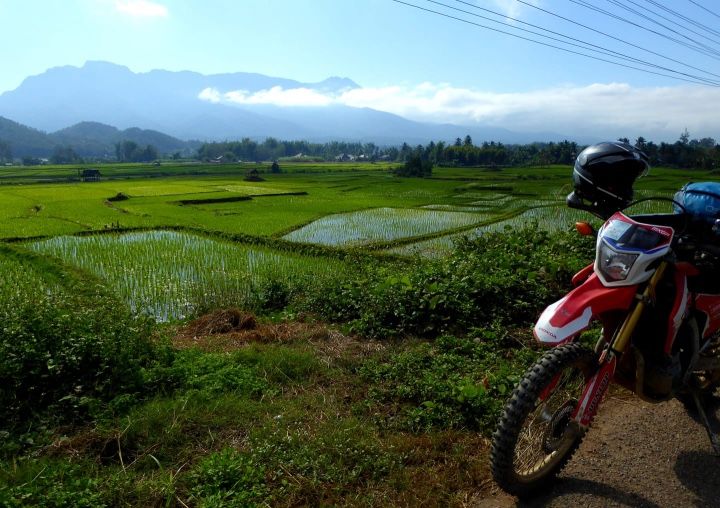
Where to stay in Sapa, Vietnam
Since tourism is booming following by tourist services – hotels, hostels & homestays are the first things anyone is looking for. There are many options to choose from ranging from budget to luxury, and from hostels to homestays. Sapa center is now occupied with luxury hotels, this provides a better choice for those seeking to stay around the center where they can walk to the nearby places, restaurants & the local night markets held every evening.
Hotels in the Center of Sapa
Many accommodation ranging from simple 3 stars to the top luxury 5 stars are now erected in and around the center of Sapa (Where stone church is located). Staying in the center of Sapa will be beneficial and gives you an easy access to numerous restaurants, shops, and attractions.
Staying in center of Sapa: Very touristy, busy area & not recommended if you’re looking for an authentic experience – HOWEVER, within walking distance, you’ll find Ham Rong Mountain and the train station to board the cable car to Fansipan and a lot more.
Homestays around Sapa [in the villages]
Homestays in Sapa are one of the best ways to get to know the local culture while staying in the lap of nature and away from the touristy side of Sapa. There are a handful of home-stays run by locals just within 5-10km from the center of town and they all offer a simple yet genuine experience.
Sapa’s ethnic population and terraced rice fields are what really make it charming and to experience this, many visitors are now prefer to book a homestay instead of staying in one of the luxury hotels in the Sapa town.
Most villages provide homestays from basic bed and shower to the more facilitate and modern ones equipped with Air condition, hot shower and a great view.
Accommodation on Muong Hoa – Cat Cat & Ta Van
Muong Hoa Valley along with Ta Van & Cat Cat village are also a great place to stay since offers breathtaking views of the mountains and terraced rice fields as it travels deep into Muong Hoa Valley from Sapa. The accommodation options along this areas offer nothing but an amazing views. You have the option of staying in a more tranquil farther out or closer to Sapa town.
The accommodation options along Ta Van & Cat Cat including simple hotels and few home-stays, remember to book them in advance.
Sapa: Food & Drinks
In Sapa, you’ll find a variety of places to eat, from small eateries to the bigger neon flashed Chinese style restaurant at the center of the town. There are plenty of options when it comes to what to eat in Sapa, however, try the local foods made by hill-tribe minorities, they are often comes with a bowl of rice, veggies, mountain herbs and fishes.
In addition to local foods, Sala offers plenty of places to eat western foods, try bigger hotels as well as restaurants in the town, they offer anything from Pizza, Pasta and English breakfast.
Street foods
Once in Sapa, from the center and where the stone church is located, walk toward Cau May Road and near the entrance to the viewing point, you’ll find several street food stalls offering a great selection of finger foods.
Try the Sapa spring rolls, fresh, grilled and filled with veggies. You can also spot other snacks like sticky rice wrapped in banana leaves or in bamboo tube, little rice cakes, and a variety of Vietnamese fruit. You can also follow locals, sit in the small plastic chair, order anything from chicken BBQ to rice and noodles and eat it right in the street. If you’re in Sapa, you should give a street food a good try.
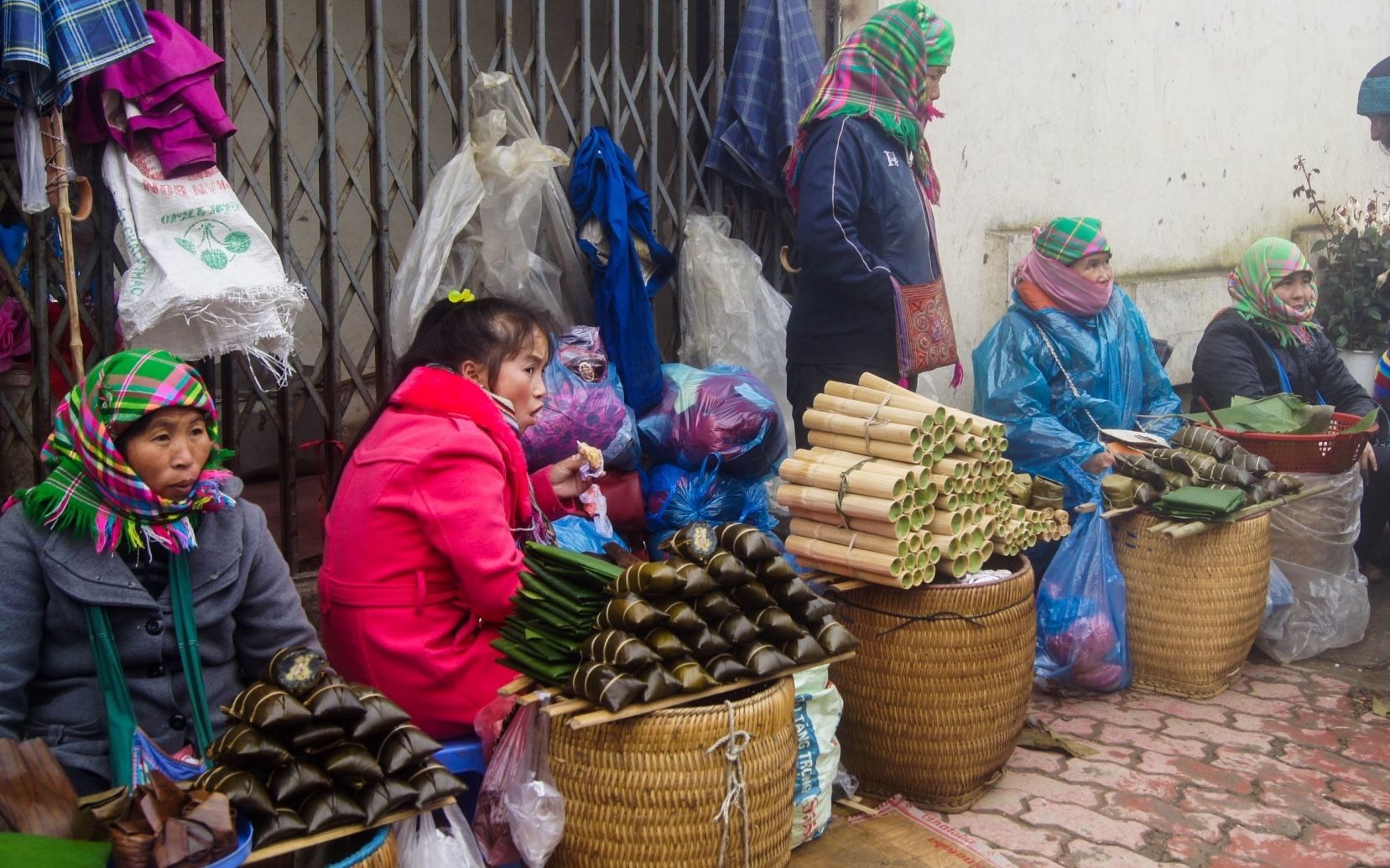
Drinks
Another great thing about Sapa is the abundance of small cafes where you can enjoy ca phe sua da (Vietnamese coffee with condensed milk). You won’t struggle to find a nice spot to sit down, rest your feet, and enjoy a refreshing drink.
At night, you can discover local bars in Sapa with pool tables and foosball at the bottom of Cau May Road. If you need a late-night beer, you’ll find one or two places, but most will close by 11 PM. Many local eateries offer rice-wine and other local wines, upon request.
Nightlife
Forget about disco and bar and late night dancing when while Visiting Sapa, It’s true that the small town is not familiar with modern nightlife, however, with the growing tourism and probably a demands, there are few Karaoke places, bars to get few beers and cocktails and a number of massage parlors around the center of Sapa.
How to Get to Sapa Vietnam
Sapa does NOT have an airpot and the closet international airport is Noi Bai International Airport (HAN), in Hanoi. How to travel to Sapa by overnight train, bus, VIP van or car. There are several options for anyone with any budget and traveling style in mind.
The distance from Hanoi to Sapa is 319 kilometres (200 miles). Here are the few best ways to get you to Sapa from Hanoi in 2025
Trains to Sapa
The 8 hours train journey from Hanoi to Lao Cai (the nearest train station, 35 km to Sapa), plus an additional 1 hour bus / car travel to the center of Sapa town. The most popular mods of transportation is to take an overnight sleeper train from Hanoi to Sapa. The train has benefits and drawbacks. Overall, it’s a dependable and safe mode of transportation and a very affordable way to travel.
Several trains run from Hanoi to Sapa every night, plus a few hat depart in day time – all operated by state-run Vietnam Railways. Each train features standard Vietnam Railways carriages and some more luxurious ones from private companies. The cheapest tickets are for the regular carriages on the Sapa Reunification Express.
Hanoi to Sapa by bus
Several buses travel from Hanoi to Sapa during the day and you can book them either online or simply ask your hotel guy and that is included a free pick up from your hotel. The bus journey from Hanoi to Sapa takes around 6 hours and actually many travelers and backpackers would prefer the overnight sleeper bus.
The buses travel through CT05, the Hanoi- Lao Cai express way, and generally the bus drivers are experienced enough and they ride with limited speed, so the bus travel feels safe and accommodations.
Hanoi to Sapa limousine van
The limousine van is probably the fastest and the most comfortable way to get yourself to Sapa in less than 5 hours. The Van limousine services are run pretty much anytime from 6Am through 3PM and the tickets are around 500k-600k and it is included a free water and a snack. The minivans are featuring comfortable seat, USB charging ports, WIFI and in Hanoi, they usually pick passenger up at Hanoi’s old quarter.
Itinerary: Explore Best Of Sapa & Around In 2 Days
Sapa Town, Cat Cat/Ta Phin Village, Silver Waterfall, Love Waterfall, Stone Church
Spend the day exploring Sapa. Start with sunrise views and a visit to Sapa market around 6 a.m. Enjoy breakfast at your hotel from 7 to 8 a.m., then take a private car to Cat Cat/Ta Phin village. Explore the villages from 8 a.m. to noon, then have lunch at local restaurants.
In the afternoon, head to Silver Waterfall and Love Waterfall. Enjoy the beautiful scenery overlooking the whole region, then return to Sapa town. Take an hour to relax and shop before dinner at Do Quyen restaurant from 7 to 9 p.m. Afterward, enjoy coffee or visit the stone church.
Day 2: Mount Fansipan, O Quy Ho, Ham Rong Mountain
On the second day, enjoy the Mt. Fansipan, the highest in Vietnam and Indochina. Leave Hotel at 8 a.m. for the cable car. Spend the morning enjoying the views from the mountain until noon. Have lunch at a local restaurant.
Next, visit O Quy Ho and Ham Rong Mountain, which are close together, making it easy to explore both in the afternoon. These stunning locations offer fantastic photo opportunities.
This was an itinerary suggestion for 2 days Visiting Sapa and around. With the tourism industry evolving rapidly, don’t miss the chance to experience Sapa.
Is Sapa really worth visiting?
Is is worth going to Sapa? Absolutely, The alpine character, home to some of the best rice fields, easy hikes & great mountain passes along with the local tribal people are only few of the best things to drag you to plan a trip to Sapa. For the best and an impactful travel experiences, plan it correct and based on your expectations. Book a tour from Hanoi, or experience the whole region on a motorbike. Also, train travel is much more comfortable.
How many days in Sapa is enough?
If you’re traveling to Sapa for the first time, a stay of 2-3 days is most recommended. If you’re interested in off-the-beaten track, Sapa and surrounded mountains would be the ideal start, basically 4-6 days will do if you’re heading from Sapa to villages and travel with motorbike along the area. It’s always a good idea to check current travel conditions and weather forecasts before planning for Sapa.
What is special about Sapa?
Sapa is definitely a special place to visit & more travellers are booking to stay in for the climate, rice terraces, waterfalls, majestic mountains, top peaks and hiking trails. The climate (cold in winter) and to visit the hill tribes (mostly Hmong, Dao and Kinh people) who call Sapa a home. The Saturday market is the best place to buy handicrafts.
Just 9km (5.5mi) from Sapa is Fansipan (3143m/10,309ft), which is Indochina’s highest peak. A hike to the top and back takes about four days, Cable car made it easy to visit at anytime.
Can you do Sapa without a tour?
You can do Sapa by yourself, however, to trek in Sapa without a guide, some travelers may find it challenging due to the lack of trail markers or signs. Many of the best trekking routes lead through terraced rice fields owned by local farmers, making it beneficial to have a local companion who can share insights and ensure you don’t get lost. Exploring with a guide also allowing you to understand the local tribal culture and traditions, so, overall, Sapa with a tour would be more beneficial.
Visiting Sapa with kids
Things to do in Sapa with kids – Most families visit Sapa to go trekking, which offers a fantastic way to explore local villages and the countryside just outside the center of Sapa town. If you have a few days, consider a motorbike tour to Love Waterfall and an amazing view points on O Quy Ho mountain pass. Don’t miss the cable car ride and the trek to the summit of Fansipan (3,147 meters). These activities provide thrilling adventures for kids and create lasting memories for the whole family.
Copyright 2013-2017 Vietnamese Private Tours Ltd With Vietnam Luxury Travel





